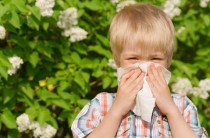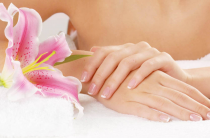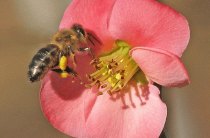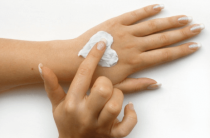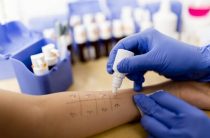Allergy to the sun is a type of allergy in which the allergen for the patient are those substances that are formed under the influence of ultraviolet radiation. For a patient with photodermatitis (scientifically called allergy to the sun), long-term exposure is not necessary, because in the presence of hypersensitivity of the body, even short-term exposure to sunlight is sufficient.
In today's world, cases of sun allergy are quite common. About 20% of people have experienced symptoms of the disease, in one form or another. This is due to the fact that the sensitivity of the skin can increase, under certain factors. Allergy to the sun must be treated, without fail, in order to avoid the recurrence of such cases in the future. Treatment of this disease should be carried out, with the selection of the most effective therapy, as well as taking into account the individual picture of the disease and maximum attention to safety for the patient.
It is a misconception that the rays of the sun are an allergen in this disease. Due to the nature of the immune system, only specific substances that enter the body can act as an allergen. Basically, these are substances of a protein nature. Sun allergy is an autoimmune disease. In this case, the development of the disease occurs in response to the body's own metabolic products.
Causes of Sun Allergies
Actually, in itself, allergic sensitivity, in relation to the rays of the sun, is rare. Basically, sensitivity to sunlight is provoked by various factors. These can be factors of both external and internal nature. Substances that increase photosensitivity can be food, certain plants and their components, drugs. As for internal causes, that is, those that are due to the state of the body itself, then often an allergy to the sun is the result of certain disorders or diseases.
External factors include:
- drugs (antibiotics, barbiturate sleeping pills, female contraceptives,
- antipsychotics, diuretics, salicylic acid derivatives, drugs for the treatment of fungal
- infections, antiarrhythmic drugs, tetracycline antidepressants, non-steroidal anti-inflammatory drugs);
- plants containing furocoumarins (their fruits, juices, spices and other products based on them): cocoa
- beans, cumin, grapefruit, orange, tangerine, parsley, nuts, cinnamon, figs, mountain ash;
- meadow grass pollen (clover, agrimony, sedge, angelica, St. John's wort, cow parsnip, nettle, buckwheat, quinoa);
- cosmetic substances containing para-amino acid;
Internal factors include:
- Diseases and disorders of the liver;
- Disorders of the gastrointestinal tract, dysbacteriosis;
- Diabetes mellitus, obesity;
- Pregnancy, old age, as well as age up to 3 years;
- Lack of vitamins A, PP and E;
Sun allergy symptoms
Sun allergy is a type of so-called contact allergy. That is, the allergy in which skin manifestations occur, with direct contact.
Symptoms of this type of allergy involve various skin changes that can develop both immediately and for some time (several hours or days) after contact. These include:
Burns due to exposure to sunlight. Basically, this happens when people with ultraviolet-sensitive skin are exposed to long-term exposure to sunlight. Violation of skin pigmentation, local hemorrhages, from damage to small vessels. This occurs with prolonged exposure to sunlight, low intensity.
The appearance of symptoms of dermatitis: the formation of redness at the site of contact with the sun's rays, a rash of tiny blisters with transparent or yellowish contents. These places have severe itching, which, when combed, forms a crust.
Solar urticaria. This symptom is the appearance of rounded foci of redness, irregular in shape, which have an increased temperature and tend to merge.
sun allergy cream
Sun allergy cream is an effective treatment for the symptoms of this type of allergy. The use of creams allows you to achieve an improvement in the condition of the skin, without the common side effects for the body that occur when using pills or injections. In general, local remedies are used to solve the following therapeutic problems:
- Relieve itching and eliminate inflammation;
- Moisturize the skin;
- Neutralize the manifestations of an allergic rash;
- Remove local vasodilation caused by histamine;
- Soothe irritated skin;
- Restore injured skin during an allergic reaction.
Hormonal creams
Hormonal is a cream that contains glucocorticoids. These are special hormones that have one of the functions in the body, they have the removal of an allergic reaction. Their use allows to achieve the elimination of skin manifestations of an allergic reaction at the application sites.
Our body's adrenal glands themselves produce glucocorticoid hormones, which they need to carry out various functions. If used incorrectly, the use of a hormonal cream can cause the adrenal cortex to be unable to produce natural hormones in sufficient quantities. For this reason, these funds are used only as part of short-term courses, with acute manifestations of allergy to the sun.
According to hormonal activity, this type of allergy cream is divided into:
- Weakly active - prednisolone, hydrocortisone;
- Moderately active - afloderm, fluorocort, lorinden;
- Highly active - advantan, elocom, celestoderm;
- Extremely high-active - dermovate
- Prednisolone
- corticosteroid cream, which has minimal side effects, subject to short-term use. Prednisolone is used, depending on the severity of symptoms, from 1 to 3 times a day. The skin, without fail, must be cleaned before applying this cream. Long-term use of prednisolone may cause excessive hair growth at the site of application. Also, with long-term use, immunity disorders may develop, as well as tissue repair processes at the application sites.
- Hydrocortisone Cream
- a remedy for the treatment of dermatological processes, with allergic reactions. Effective in relieving swelling of the skin, itching and inflammation. The active substance of this cream promotes the accumulation of fluid at the application sites, which is very effective for the treatment of dermatitis accompanied by drying of the skin. Apply the ointment in a thin layer, on the foci of allergic localization, from 1 to 3 times a day. The maximum period of application is 1 month.
- Locoid
- an effective cream to relieve allergic rashes, itching and inflammation. This drug is used for allergies to the sun in cases where weaker drugs have not helped. This cream contains hydrocortisone, in its most active form, to interact with the cells of the epidermis. Start using this cream with minimal dosages in order to find out the lowest concentration of the substance that leads to a therapeutic effect.
- Flucinar
- a cream based on a synthetically derived glucocorticoid substance. Eliminates itching, inflammation and skin allergic manifestations. It is used for severe allergic manifestations. Flucinar is not used for more than 2 weeks. For the treatment of skin manifestations on the face, with allergies to the sun, the use of this drug is reduced to 1 week.
- Fluorocort
- corticosteroid drug, for local use, in the form of a cream. Reduces the production of substances involved in the production of an allergic reaction, eliminates inflammation and skin manifestations of an allergic reaction. The components of this cream penetrate poorly into the general bloodstream, so the likelihood of common side effects is minimal.
- Elocom
- a cream based on a corticosteroid of artificial origin. Eliminates inflammation, itching and relieves allergic vasodilation. Elokom is applied once a day, in an amount that is sufficient to cover the affected area with cream. Specific terms of application depend on the individual course of the disease. Adverse reactions, when using elocom, are rare, and in this case, they are manifested by atrophic transformations of the skin, the development of acne.
Features of the use of hormonal cream:
- Drugs of a stronger class are prescribed only as a last resort, with the ineffectiveness of weaker drugs;
- If allergic diseases have caused a fungal or viral infection, then appropriate concomitant treatment is prescribed;
- Corticosteroids are tried to be used only as part of short-term therapy, with long-term treatment with corticosteroids, the state of the adrenal glands should be monitored;
- The cream is applied only on dry and clean skin;
- Use these creams only as directed by your doctor.
Antihistamine creams
These funds are also used to treat allergies to the sun. They help prevent the action of histamine, which is released in the body when exposed to the sun's rays. Creams based on antihistamines reduce the intensity of the manifestation of an allergic reaction on the skin. They are not as effective in this respect as corticosteroid agents, but they also show good results.
There are antihistamine creams, which include natural substances that can have an anti-allergic effect. Cream Gistan is a bright representative of funds of this nature. The main active ingredient of this product is an essence extracted from birch buds. Its use can soothe the skin, relieve itching, reduce allergy symptoms and soothe irritated skin.
Fenistil cream is an antiallergic agent, the active ingredients of which are able to block histamine H1 receptors. Relieves symptoms of allergic manifestations, eliminates itching, softens and soothes the skin. Due to the inhibitory effect on the action of acetylcholine, it is effective in the treatment of urticaria caused by sun allergy. On clean, dry skin, apply a thin, evenly distributed layer, 2 to 4 times a day.
Sun Allergy Healing Cream
Allergy to the sun often causes burns and other types of damage to the skin, as well as drying out and irritation. Therefore, it is necessary to additionally use creams containing substances that help restore the skin, as well as having a soothing and moisturizing effect. These creams include:
- Creams based on panthenol (Panthenol-D, bepanthen, pantoderm) - this substance helps to heal skin cracks that are provoked by allergic diseases, have a moisturizing effect.
- Lanolin-based creams are used for sun allergies, due to their ability to soothe the skin, relieve pain and irritation;
- Creams containing retinols. Retinol is a natural vitamin substance that stimulates the restoration of the skin after injuries.

